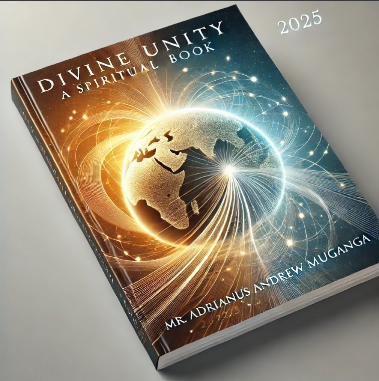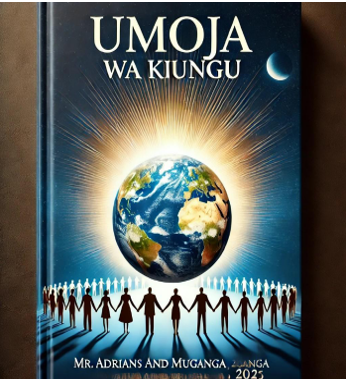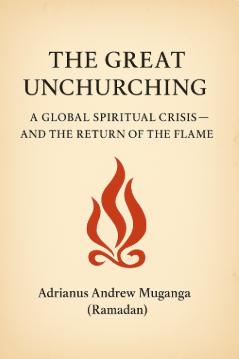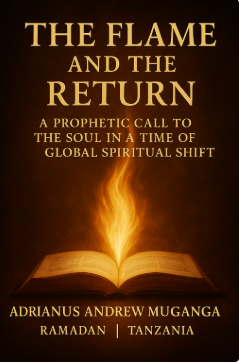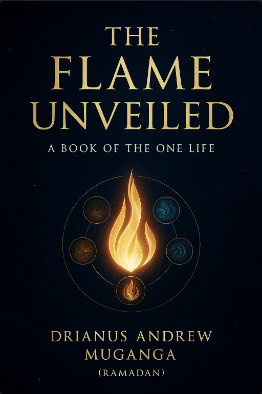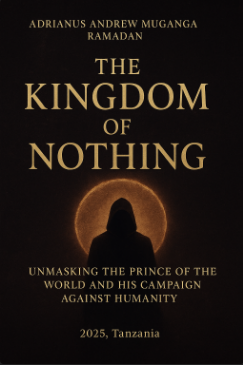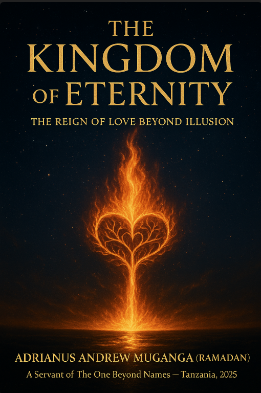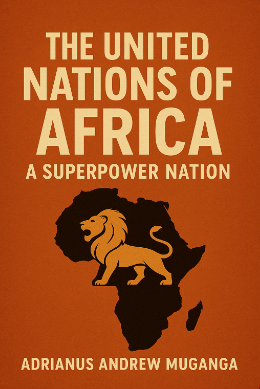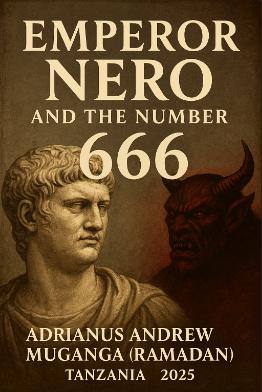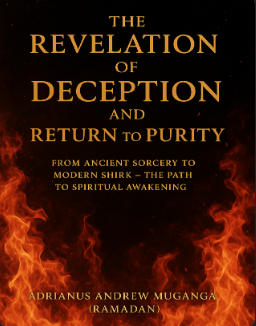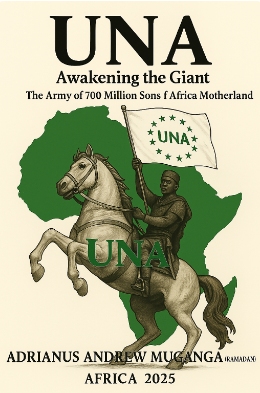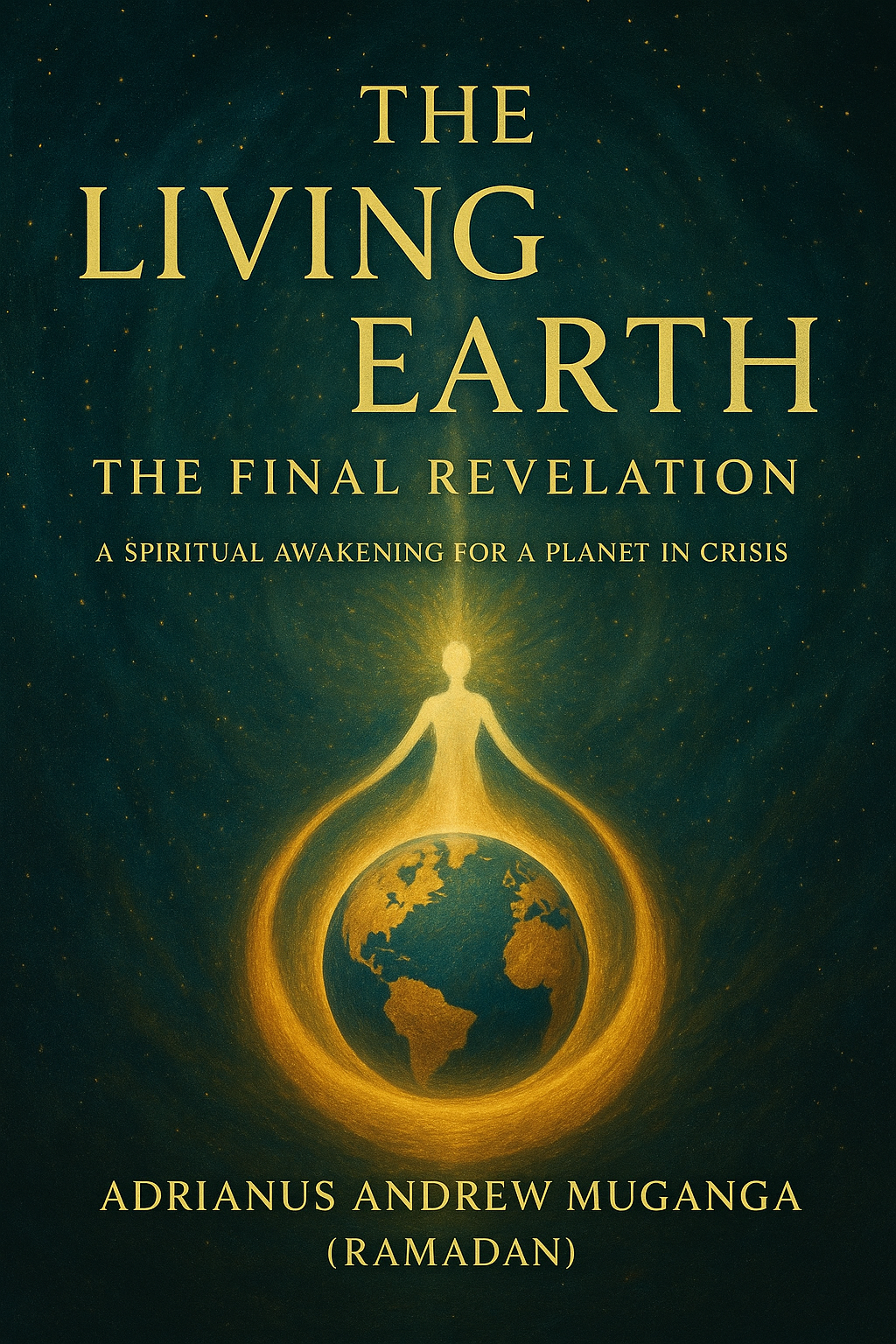
The Living Earth: The Final Revelation
Subtitle: A Spiritual Awakening For A Planet In Crisis
Author: Adrianus Muganga
The Living Earth: The Final Revelation by Adrianus Andrew Muganga (Ramadan) is a powerful spiritual and ecological work uniting ancient revelation, science, and lived experience. It reveals that the Earth and its elements — Earth, Water, Air, Fire, and Space — are living beings, each bearing divine purpose. The book argues that humanity’s environmental crisis is, at its root, a spiritual crisis born of pride, material attachment, and forgetfulness of God. Through scripture, global traditions, and personal testimony, the author unveils a forgotten covenant between Creator, creation, and humanity. He calls for repentance, stewardship, and renewal through both faith and practical action. The work culminates in a universal covenant — a vow to restore balance and live as guardians of the planet. This book is both revelation and roadmap — a voice for those seeking to heal the Earth and reclaim the soul of the world.
Keywords for this book
You can only order 1 ebook at a time
Book summary
The Living Earth: The Final Revelation is a monumental spiritual and ecological work that stands at the crossroads of faith, science, and humanity’s moral crisis. It reveals that the planetary suffering we call “climate change” is not just an environmental issue — it is a spiritual emergency, the cry of a living Earth that has been wounded by human pride, material attachment, and forgetfulness of the divine order. This book is the seventh and final volume in a life-long spiritual series — the culmination of the author’s personal journey through revelation, loss, and divine encounter. Drawing from Islam, Christianity, and indigenous traditions, the book uncovers a sacred pattern that has been visible since the dawn of creation: Revelation → Forgetfulness → Consequence → Renewal. Through this lens, humanity’s story — from Adam’s creation to today’s climate crisis — becomes one continuous unfolding of divine truth. Part I — The Primordial Whisper: Origins and Principles The book opens by unveiling the elemental grammar of life. The Earth is introduced not as a mass of rock and soil, but as a living womb — the Mother of all creation, the vessel of divine mercy. In the Qur’an, Bible, and Vedic traditions, the Earth is described as alive, listening, and responding to human action. The author recalls the story of Adam’s creation: how angels were sent to collect soil from Earth, and how the Earth hesitated, knowing that from this soil would rise beings capable of sin. Yet from that same soil came the potential for divine reflection — humanity made in the image of God. The first chapters establish that the five sacred elements — Earth, Water, Fire, Air, and Space — are not inert materials but living entities through which God’s will and mercy are manifested. Each element holds purpose and consciousness. The golden ratio, Fibonacci spirals, and the geometry of life are revealed as divine signatures — visible patterns of unity in the structure of leaves, shells, galaxies, and human DNA. Part II — The Living Elements The second part of the book explores each element as a spiritual being with a unique covenantal role. Earth is the womb and the memory of creation. Through stories of Cain and Abel, the author describes how the first blood shed on the ground was not forgotten — the Earth cried out, bearing witness. Humanity’s violence against the soil continues today through deforestation, pollution, and extinction. The book calls for a spiritual restoration of land — regenerative farming, tree planting, and ecological prayer — as acts of repentance and renewal. Water is portrayed as the essence of purity, mercy, and memory. The Qur’an teaches that all life began from water. The author reflects on the phenomenon of barzakh — where two seas meet but do not mix — as a divine symbol of balance and boundary. Yet humanity’s treatment of water through pollution and waste reflects spiritual corruption. The sacredness of unaltered water — as used in ablution, baptism, and purification — becomes a metaphor for purity of heart. Air and Space are described as the breath of God — the rūḥ, prāṇa, and pneuma that animates all existence. Every breath we take is a participation in the divine rhythm of creation. Yet modern pollution and industrial excess have turned the breath of life into a burden. To heal the air is to restore balance to the breath of all beings. Fire and Light are both destroyers and purifiers. Fire is the source of revelation — the burning bush of Moses, the pillar of fire that guided the Israelites, the tongues of fire at Pentecost. But fire, unbalanced, becomes destructive — in war, industry, and greed. Humanity’s misuse of fire through fossil fuels mirrors spiritual pride — the same pride that led Iblis to fall. Fire, in its essence, is divine energy — to be used with reverence, not domination. Part III — The Human Failure Here, the book explores the Whisper of Iblis — the archetype of arrogance and separation. Iblis refused to bow to Adam, declaring himself superior because he was made of fire. This became the seed of human pride and disconnection from the Creator. The author links this to the modern age, where humanity bows not to God, but to technology and materialism. The worship of invention over creation has led to ecological and moral collapse. Science has become a form of idolatry when detached from reverence. The suppression of the feminine — both in society and in spirituality — is shown as the root of imbalance, because the feminine principle represents nurturing, receptivity, and sacred wisdom — qualities the Earth herself embodies. Part IV — Old Stories, New Light Ancient narratives are reinterpreted as eternal lessons. The story of Noah becomes a call for covenant renewal — the Ark as a sanctuary of biodiversity and hope. The story of Sodom and Gomorrah is reframed as the fire of purification, not destruction — a warning against corruption and spiritual blindness. The prophets and reformers of all ages — from Moses to Muhammad, from Jesus to the Buddha — are seen as voices of restoration, calling humanity back to the natural order. Part V — The Formula of Life This section reveals the divine formula that sustains existence: seed, womb, and breath — creation, nurturing, and renewal. Every form of life follows this pattern. From the endosperm of plants to the embryo of humanity, creation begins in fluidity and takes shape through time and care. The author argues that humanity’s survival depends on rediscovering this sacred formula — humility, reciprocity, and service. Rituals of repair, both individual and collective, are proposed to heal the bond between humanity and Earth. Part VI — Rebirth of Humanity This part offers practical, social, and institutional frameworks for renewal. It advocates for the Law of the Living Earth, where the planet itself is granted rights and moral standing. Women-led ecological governance is proposed as a means of restoring balance, rooted in compassion and wisdom. Interfaith alliances are encouraged to unite diverse traditions in shared elemental reverence. The economics of return — regenerative, just, and community-based — replaces the exploitative systems that now dominate global economies. Part VII — The Final Covenant The book culminates in a universal covenant of renewal — a spiritual and practical commitment to honor the living Earth. The author envisions global ceremonies, interfaith rituals, and long-term pledges for restoration — 10-year, 30-year, and 100-year visions. The covenant is both inward and outward: a personal vow of stewardship and a global movement of action. The final chapter — The Promise of Return — closes the series with a message of hope. Even amid crisis, the divine pattern continues: revelation follows destruction; life follows death. The Earth is not dying — it is calling for transformation. Humanity must remember that death itself is not punishment but passage, and surrender is the path to eternal peace. Conclusion The Living Earth: The Final Revelation is not simply a book — it is a call to spiritual action. It invites readers to see that every ecological wound mirrors a spiritual wound. Healing one requires healing the other. In surrender to God, fear dissolves; in love for the Earth, life renews. When humanity finally remembers the covenant of stewardship, Eden will not be a myth — it will be restored.
